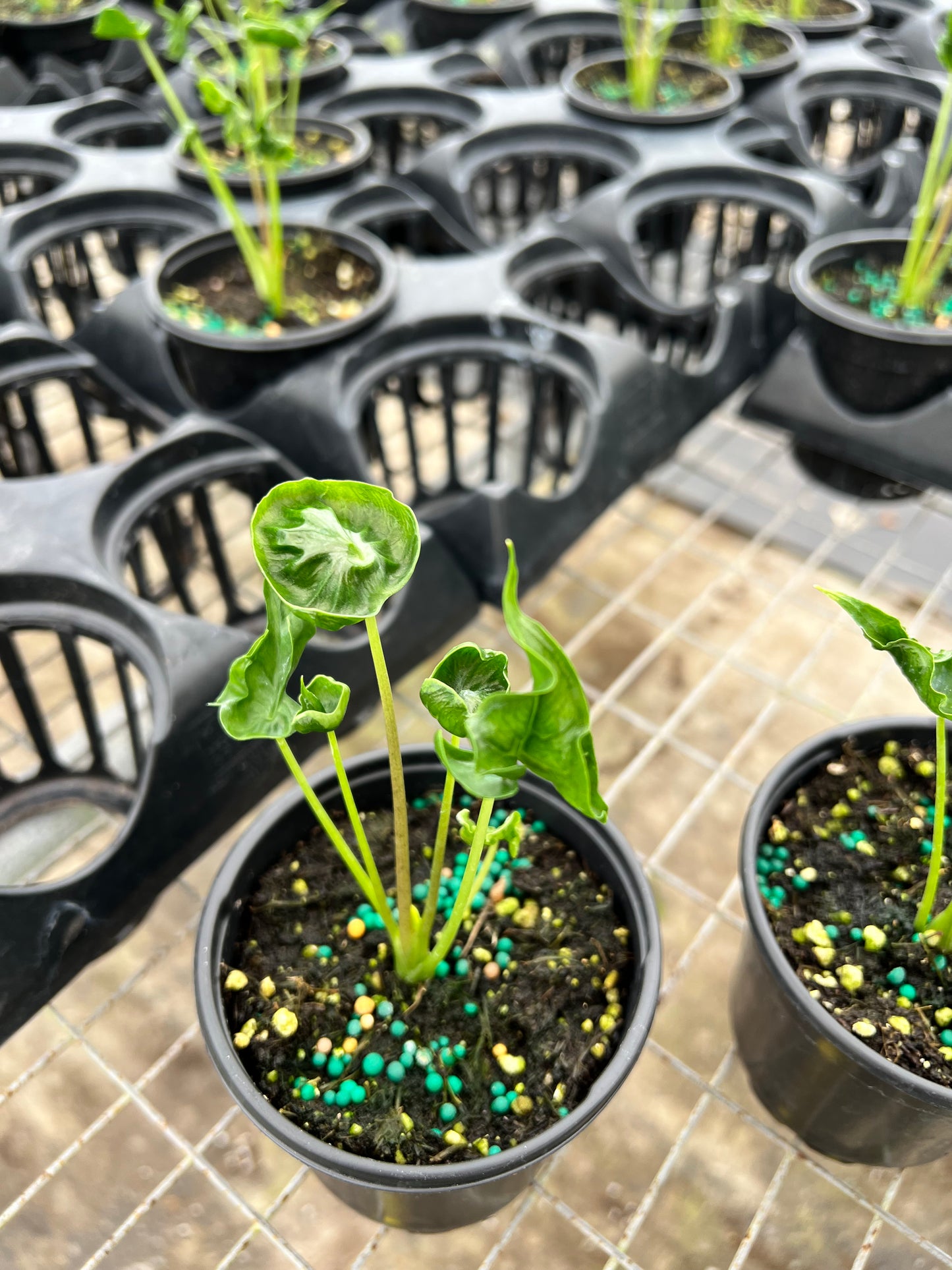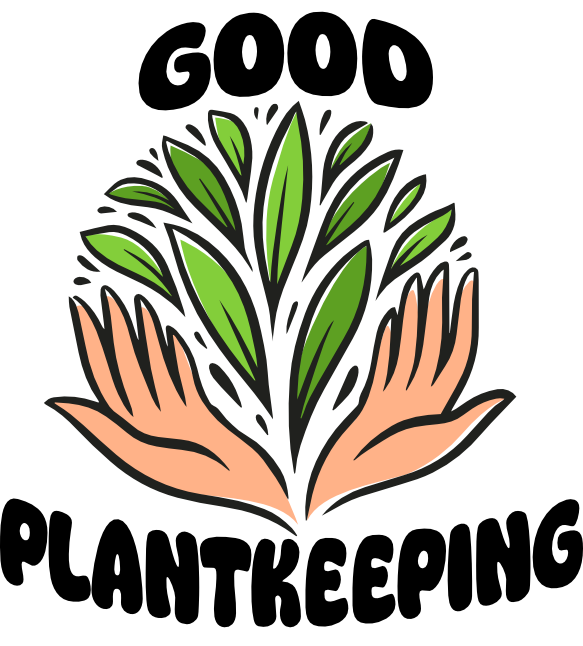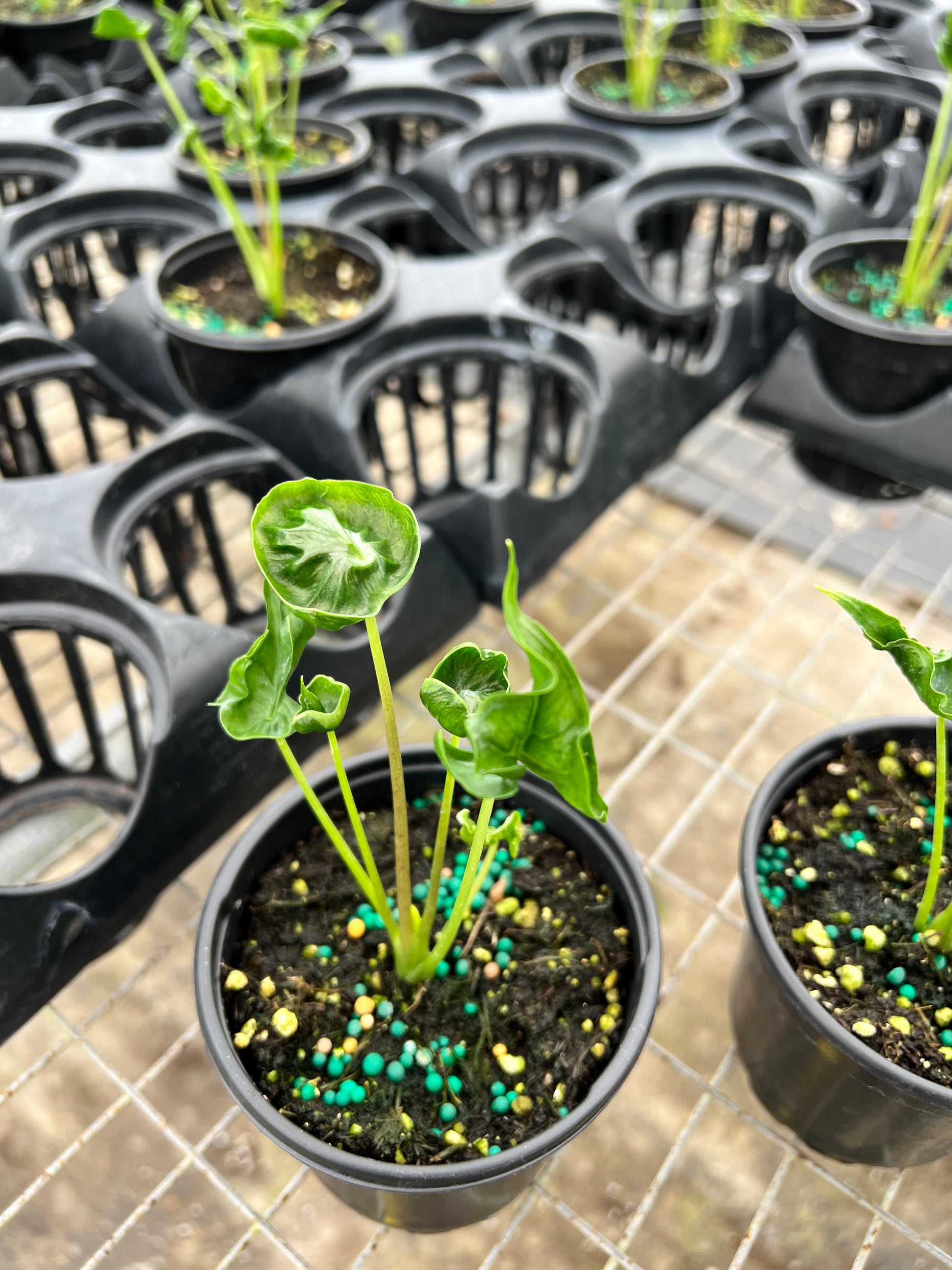Good Plantkeeping
4” Alocasia Teletubbies
4” Alocasia Teletubbies
Couldn't load pickup availability
Meet the whimsical and wonderfully weird Alocasia 'Teletubbies', one of the most unique and conversation-starting rare houseplants you can add to your collection. This charming dwarf Alocasiavariety is prized for its compact size and unusually textured, ruffled foliage that stands out from any other elephant ear plant.
True to its quirky name, the Alocasia Teletubbies showcases small, deep green leaves with a distinctive crinkled or ruffled surface that gives it a playful, almost sculptural appearance. The magic continues on the underside, where the leaves often reveal a surprising contrasting red or maroon color. Its compact, clumping growth habit makes it a perfect choice for terrariums, small shelves, and desks where space is limited but personality is a must.
Key Features of the Alocasia Teletubbies:
-
Unique Textured Leaves: Boasts deeply ruffled, crinkled green leaves for incredible visual and tactile interest.
-
Stunning Color Contrast: Features surprising red or maroon undersides for a pop of hidden color.
-
Compact & Dwarf Size: A small, clumping plant ideal for terrariums, offices, and small spaces.
-
Rare Collector's Plant: A highly sought-after oddity for serious alocasia collectors and rare plant enthusiasts.
-
Conversation Starter: Its unique appearance is guaranteed to be a talking point in your home.
Alocasia 'Teletubbies' Care Guide:
While a rare gem, this plant thrives with consistent care. Here’s how to keep your Alocasia happy:
-
Light: Prefers bright, indirect light. Avoid harsh direct sunlight, which can scorch its delicate leaves.
-
Water: Likes consistently moist soil but is prone to root rot. Water when the top inch of soil is dry and ensure excellent drainage.
-
Soil & Pot: Requires a very well-draining aroid mix (with perlite, bark, and charcoal) and a pot with drainage holes.
-
Humidity: Thrives in high humidity environments (60% or more). A great candidate for a cloche or humidifier.
-
Dormancy: Note that like many alocasias, it may go dormant in winter, losing leaves before regrowing in spring.
-
Toxicity: Toxic if ingested. Keep out of reach of cats, dogs, and pets.
Share


